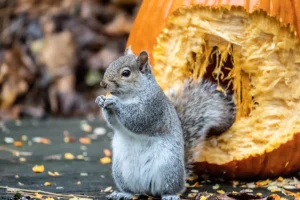Home / Blog / Menacing Midges—Everything You Need to Know
Menacing Midges—Everything You Need to Know

Scientifically reviewed by Daniel Baldwin, BCE, CCFS, CP-FS
-Published on March 8, 2023
-Updated on July 21, 2023
Biting Midges are a warm-weather menace in many areas, often referred to as “no-see-ums” because of their tiny size. Barely visible alone, you’ll definitely be aware of their presence when they attack—these small insects pack a painful, pinching bite. Below, you’ll learn more about what midges are, where you can find them, and how to keep them away from your home and yard.
What are midges?
Midges are a tiny fly with over 4,000 species found worldwide. They resemble little mosquitoes, but without the protruding mouthpart. Their bodies are variegated shades of brown with wings that are shorter than their bodies.
Like mosquitoes, females of some midge species of the biting variety require blood to reproduce. Male midges don’t bite, but females have cutting mouthparts they use to break the skin and feed on blood from their victims. While mosquito bites often go unnoticed at the time—only being revealed by an itchy, red bump hours later—you’re likely to notice a midge bite as it’s happening. Midge bites can be quite painful, making this member of the fly order a potentially serious nuisance in large numbers.
How big are midge flies?
At only 0.04 inches long, midges certainly earn their nickname of “no-see-ums” since they are only the size of the point of a pencil. The most common way to identify midges is when the males swarm in large groups.
Where are midges found?
Midges are found globally, with 47 species of biting midges in Florida alone. The most common areas to find midges are close to water sources, like lakeshores, coastlines, swamps, and moist soil. The area where water meets sand or soil is often rich in nutrients, making midges a common sight along coastlines in the US.
Swarms of midges often afflict golfers since they frequently situate themselves on golf course water features, giving midges plenty of opportunity to breed.
What time of year do midges come out?
Depending on your location within the US, midges can be a year-round nuisance. And since they need a place where water meets shore to thrive, midges will begin to appear along rivers, lakes, swamps, and coastlines in areas with cooler winters when the weather starts to warm up.
In warm-weather states like Florida, midges are found throughout the year. Warm temps and humidity mean that midges can continue their lifecycle without the interruptions from freezing winter weather.
Is the bite from a midge dangerous?
Midge bites are undoubtedly painful, especially if you’re unlucky enough to be caught in a swarm. However, midges aren’t known to transmit diseases to humans.
Potential complications in people can be caused by a severe reaction to the bite, where itching and swelling may require an antihistamine. However, unlike mosquitoes, midges don’t transmit diseases such as Zika or West Nile.
However, midges can transmit diseases to other animals, primarily bluetongue virus to livestock and African horse sickness virus to horses. And while this can be a serious problem for the afflicted animal, it’s not transmissible to humans.
How do I keep midges away?
The best way to keep midges from breeding in your yard and ruining lovely outdoor days is to control the areas where they like to breed. Here are a few things you can do to avoid the dreaded midge bite:
- Keep your yard free of standing water – Midges breed in shallow and stagnant water, so ensuring your yard is free of things like soft, moist areas, puddles, or even birdbaths can help reduce the midge population.
- Use a water pump in ponds – Ponds are an attractive part of the landscaping, but they can be a breeding ground for midges. Using a water pump to create a water feature does double duty by keeping still water circulating and creating a calming and enjoyable sound in your yard.
- Avoid being outside during midge’s most active hours – Midges are out and about during the early morning hours and dusk, avoiding the heat of the direct sunlight in the daytime.
- Wear clothing that covers your exposed skin – If you find that midges have invaded your yard, you may have to cover up while getting rid of their breeding grounds. Their mouthparts aren’t big enough to bite through clothing, so even a light layer will help.
- Use insect repellent – Natural insect repellents may help, but if you’re set on repelling midges and avoiding bites, an insect repellent with DEET will be your best bet.
If you’re experiencing a pest control problem that’s making your home feel less like a sanctuary, Hawx Pest Control can help. Our knowledgeable and friendly technicians are ready and waiting to help you with industry-leading products, equipment, and technology. From rodents to cockroaches, bedbugs, and more, we’ll create a pest management plan for you to get your home back to feeling relaxed and comfortable.
Related Articles
Visit our blog to learn more.
→




